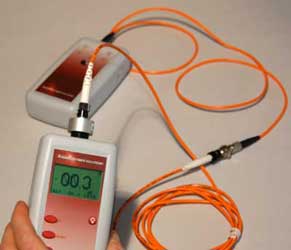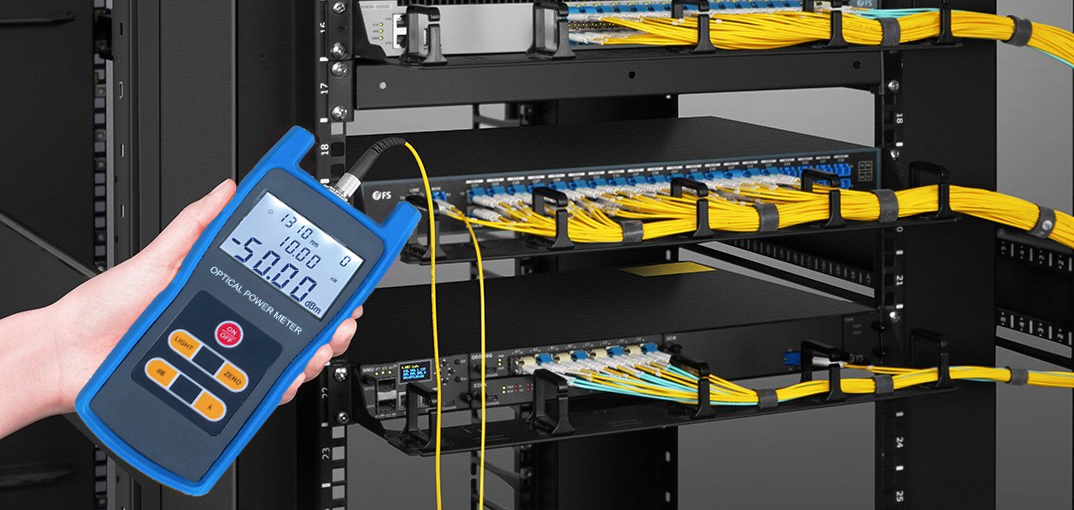Discover the Significance of Optical Fibre Screening in Modern Telecom
In the world of modern telecommunications, the importance of optical fibre testing can not be overstated, as it serves as the foundation for making certain network reliability and performance. What are the certain advantages that regular screening offers, and exactly how might it shape the future landscape of telecoms?

Recognizing Optical Fiber Screening
Optical fiber testing is a critical process in telecommunications that makes sure the integrity and performance of fiber optic networks. This screening incorporates a series of treatments developed to examine the physical and useful characteristics of optical fibres - optical fibre testing equipment. Key specifications assessed consist of optical power loss, data transfer capacity, and mistake area, which are necessary for preserving top quality interaction web links
The testing procedure typically entails using customized equipment such as Optical Time-Domain Reflectometers (OTDR) and Optical Power Meters. OTDRs are employed to determine and characterize mistakes, mates, and ports within the fiber, while power meters measure the transmitted light signal strength to identify performance.
In addition, screening is conducted at numerous phases, consisting of during setup, maintenance, and troubleshooting, to make sure that the network fulfills market requirements and functional demands. Compliance with standards established by organizations like the International Telecommunication Union (ITU) and the Telecoms Sector Organization (TIA) is vital.
Advantages of Routine Checking
Normal screening of optical fibres returns various advantages that considerably boost network dependability and efficiency. One of the main advantages is the very early discovery of prospective concerns, such as breaks or destruction in the fiber, which can bring about costly downtime if left unaddressed (optical fibre diameter analyser). By identifying these troubles proactively, telecommunications carriers can minimize service disruptions and ensure constant connection for their clients
In addition, routine screening aids to preserve the honesty of signal top quality. As optical fibers age, their performance can be influenced by elements such as ecological problems and physical stress and anxiety. Routine analyses allow for the monitoring of signal loss and overall transmission efficacy, guaranteeing that the network runs at optimum levels.
Another considerable advantage is conformity with sector requirements. Routine screening supports adherence to regulatory demands, thereby mitigating lawful and monetary dangers related to non-compliance. Additionally, it enhances the general life expectancy of the fibre facilities by helping with timely repair and maintenance.

Typical Checking Approaches
Evaluating optical fibers employs different approaches to make sure the stability and performance of telecommunications networks. Amongst one of the most common strategies is Optical Time Domain Name Reflectometry (OTDR), which evaluates the entire size of the fiber by sending a pulse of light and determining the reflections triggered by blemishes or breaks. This technique offers detailed details regarding the place and intensity of faults.
An additional prevalent method is making use of Optical Power Meters, which determine the amount of light sent with the fibre. This strategy aids figure out the loss of signal toughness, making sure that it meets industry requirements. In Addition, Aesthetic Mistake Locators (VFL) are utilized to determine breaks or serious bends in the fibre by predicting a visible laser light right into the cable television.
Insertion loss testing is additionally essential, as it quantifies the loss of signal power arising from connections and entwines within the network. The use of Polarization Mode Diffusion (PMD) testing analyzes the influence of fiber characteristics on signal integrity.
Each of these techniques plays an important role in maintaining the efficiency and dependability of optical fiber networks, ultimately adding to seamless telecoms procedures.
Influence On Network Efficiency
The integrity and performance of optical fiber networks directly affect total network performance. In contemporary telecoms, the efficiency of data transmission relies heavily on the quality of the optical fibers utilized. Any kind of degradation in the fiber's condition-- whether as a result of physical damages, contamination, or excessive bending-- can result in raised attenuation and signal loss, substantially influencing information honesty and speed.
Normal optical fiber testing is essential to determine and fix prospective concerns before they materialize as network failings or slowdowns. Strategies such as Optical Time Domain Name Reflectometry (OTDR) and insertion loss screening allow specialists visit this site to measure the performance of fiber links precisely. These tests not only review the physical condition of the fibres but also make certain conformity with sector requirements, consequently securing the network's dependability.
Furthermore, a well-maintained optical fibre network adds to minimized operational prices and enhanced customer contentment, as end-users experience fewer disturbances and higher data rates. Ultimately, the emphasis on strenuous optical fibre screening techniques works as a keystone for sustaining durable telecoms facilities, making sure that company can meet the growing needs for data transfer and connection in today's electronic age.
Future Patterns in Checking
As we look ahead, improvements in modern technology are poised to reshape optical fiber screening in telecoms. The surge visite site of automation and man-made knowledge (AI) is anticipated to enhance the efficiency and accuracy of screening procedures. Automated screening systems can perform comprehensive analyses with very little human intervention, significantly decreasing the potential for errors and quickening time-to-deployment.
Moreover, the combination of machine learning algorithms will certainly make it possible for predictive upkeep, allowing network service providers to foresee prospective issues prior to they rise right into failings. This aggressive strategy not only improves network integrity yet likewise maximizes operational expenses.
An additional arising trend is the advancement of portable testing gadgets that provide real-time evaluation - optical look what i found fibre diameter analyser. These tools will equip technicians to carry out on-site diagnostics rapidly, assisting in quicker resolutions and boosting solution quality
The growth of 5G networks additionally demands the advancement of screening approaches. As data transfer demands raise, traditional testing strategies may no longer suffice. Ingenious options such as optical time-domain reflectometry (OTDR) and advanced spooky evaluation will certainly end up being critical in making certain the honesty and efficiency of high-speed links.

Final Thought
To conclude, optical fibre screening is crucial for ensuring the honesty and reliability of contemporary telecommunications networks. Regular screening techniques not just assist identify possible problems such as signal loss and faults yet additionally add to enhanced network efficiency and customer satisfaction. As the need for seamless connection continues to grow, the adoption of sophisticated testing methods will certainly play a critical role in keeping high-quality network requirements and sustaining the evolving landscape of telecoms.